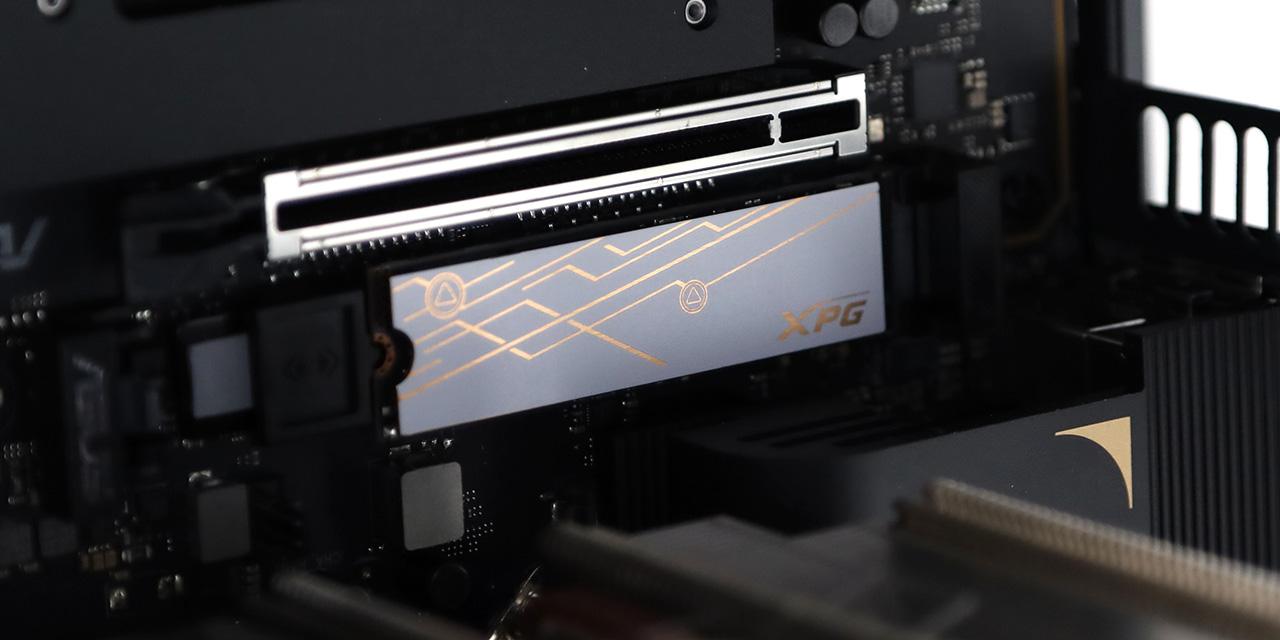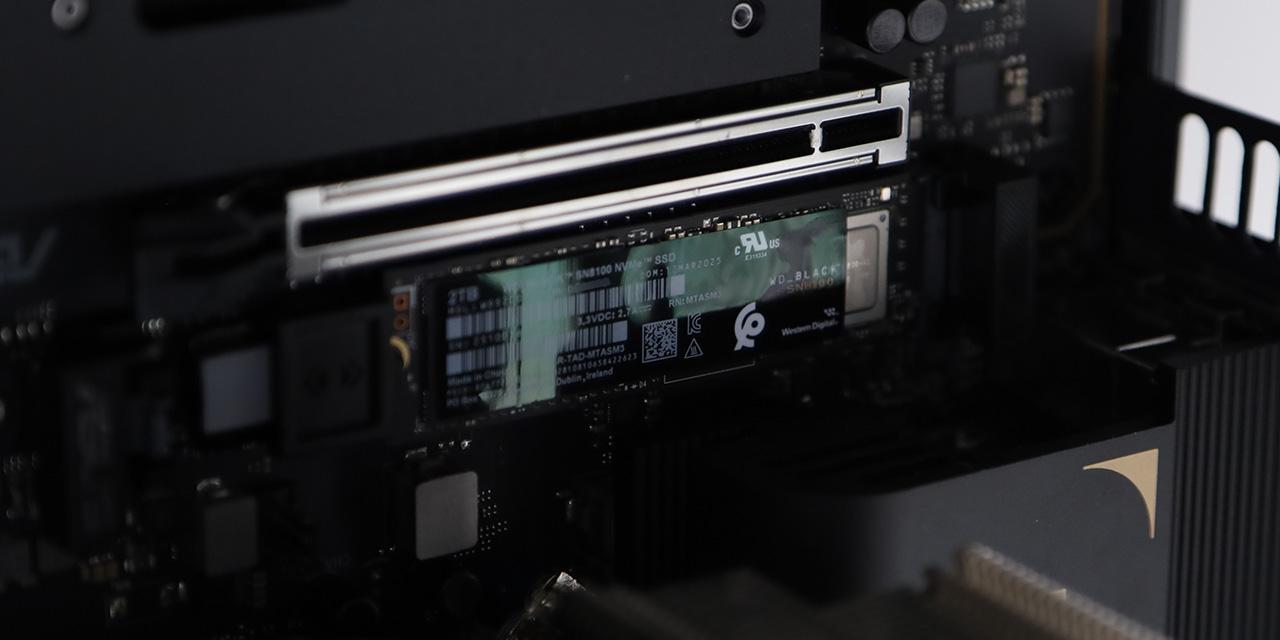Page 2 - Physical Look - Hardware

As we have reviewed Thermaltake SWAFANs in the past, including ones with lighting like the EX12 RGB, it is no surprise that our EX14 ARGB Sync fans look very similar. One difference is a nice light blue frame that really stands out from other fans. This is an appreciated surprise, although Thermaltake is probably one of the better manufacturers in incorporating more colors into their lineup of products. Otherwise, similar aspects include a translucent impeller along with a translucent ring on one side. This is done to cover the LED lighting in both the frame and the hub of the fan. A Thermaltake logo can be found in the middle. On each corner, you can see a white rubber pad that sits over each mounting hole. This provides dampening for the fan, as it reduces vibration and the resultant noise that the fan may make when affixed to something less flexible. Overall, this looks quite consistent with other illuminated SWAFANs, and the real treat is the new blue color.
Internally, the Thermaltake SWAFAN EX14 ARGB Sync fans have hydraulic bearings. These have an internal lubricant, which is usually some sort of viscous fluid or oil. When the whole thing moves, the fluid becomes distributed throughout and it creates a thin film of pressurized fluid. This reduces the friction inside and results in a higher lifespan and lower noise compared to traditional sleeve bearings. However, Thermaltake says this has an expected life of only 40,000 hours, which is short for any sort of bearing.

Looking closer at the fan blade itself, you can see some notable features here. There is a total of nine blades on the impeller. Each fin is relatively narrow with a shorter length. There is a small gap between each fin and no overlap. The angle each blade sits in comparison to the rotating middle is around 60 degrees near the bottom of the fin and 30 degrees near the top. This is because the fin itself is curved in a convex way from this perspective, so the angles are different between the bottom and the top. The blades hook out to create further curvature at the ends with the tips of the fans flaring out. Otherwise, each blade is smooth without any dimples or markings. These characteristics are similar to what we see on the reverse blade as well, although the reverse blade is curved and angled in the opposite direction.

On the flip side, four arms hold the middle area and only slightly obstruct air from passing through. This means we should have a near maximum amount of air flowing through the passage. On the other hand, you should be careful that your fingers do not get in the way of a moving impeller, especially with the lack of any grille here. In the middle, we have a Thermaltake label that shows these fans are made in China. On the topics of sound, airflow, and static pressure, the following lesson on these issues have been borrowed from my colleague Jonathan Kwan's review of the Noctua NF-F12 PWM and NF-P12 PWM fans.
Noise and CFM relates to the challenge when designing fans, which is to provide the best airflow to noise ratio. One would want the best amount of airflow while keeping it as quiet as possible. Even with the best ratio, it is quite difficult to measure objectively at all times. The most common unit of objective measurement is CFM, or cubic feet per minute, of air for airflow, and dB noise, respectively. We will go over how application and CFM is related with regards to its standard measurements, but let us discuss perceived noise first.
dB, or Decibels, is a logarithmic unit of sound intensity. While it provides what appears to be an objective measurement for the most part, it should be noted that perceived noise levels to the human ear and actual sound intensity could result in very different things. Human ears are more sensitive to particular frequencies, and when those particular frequencies are emitted from its source, it may appear louder than its numbers suggest. That same can be said vice-versa -- frequencies that human ears are less sensitive to can actually have louder dB measurements from a sound meter, yet the human ears do not perceive it to be as loud as the numbers suggest. Other factors such as turbulence noise are often not measured correctly, therefore, while it usually provides a good reference, it does not necessarily reflect real life performance all the time. As such, a scaled unit of dBA, or Decibels A-weighted, is used to measure sound with it scaled to the human hearing threshold.
With regards to the application and CFM, it is generally optimal to have a fan to have a high air volume flow rate. However, pure CFM values are limited to an extent with regards to its indication on fan performance. It is not completely about how much air in can move per minute quantitatively, but equally as important is how it is executed in reality. Airflow-to-noise ratio is an essential factor as mentioned earlier. Static pressure is also very important depending on application. High resistance applications such as dense fins on a large heatsink require high static pressure, while case fans need less static pressure and faster airflow. There are times where case fans will require higher static pressure too, such as the front intake fans where a mesh grille would create some resistance. Some fans are simply designed for different purposes, so choose one appropriate for your needs.

As for its specifications, the Thermaltake SWAFAN EX14 ARGB Sync have two sets of numbers, including one for its standard blade and one for its reverse blade. For both sets of blades, each fan can operate in a range of 500 to 2000RPM. When operating at its maximum speed, the standard fan blade produces 81.6CFM airflow, 34.5dBA noise, and 3.17mmH2O air pressure. Compared to the SWAFAN EX12 RGB, these values are all greater, although this is not too surprising given its larger dimensions. However, its louder noise is something we will have to keep in mind when we come to our testing portion on the next page. As for its reverse blade, the SWAFAN EX14 ARGB Sync produces maximum values of 79.3CFM airflow, 38.8dBA noise, and 2.73mmH2O air pressure. As you can see, these all relatively worse numbers, as it has a reduced airflow and static pressure while also producing more noise.
At this point, you may be wondering why Thermaltake would include swappable fan blades, especially when the standard blade is better in all performance metrics while being quieter. The real reason comes down to aesthetics, as this ensures one side of the fan, specifically the illuminated ring side, will always be facing towards the user. You may be tempted to use these as intake fans on the bottom or the side as more and more cases come with front panes of tempered glass. However, if they are placed in either of these positions in standard orientation, the translucent ring diffuser will face away from the user and the lighting will be obstructed. Instead, the reverse blade ensures we can visibly see the ring of light inside the case while still directing air in the proper direction. The alternative to this would be to make a fan that has lighting on both sides of the frame, as we have seen on the Corsair iCUE QL120 RGB, but there are tradeoffs to this implementation too.
Thankfully, Thermaltake has made the swapping mechanism quite quick and easy to do. With sufficient and even force, you can pop off the entire middle. Afterwards, you can put on your desired blade and push it in until you hear another pop. One thing to note is the extra lubricant that you can apply after several swaps. You do not need to reapply after every swap, but only when you see a reduction in the grease around the bearing.

One other neat aspect that we saw with the EX12 RGB is the use of magnetic headers, and thankfully we have the same with our Thermaltake SWAFAN EX14 ARGB Sync. Each fan has two sides on the frame, with eight extending pogo pins on one side and eight pogo pads on the other. Thermaltake includes three individual header cables that attach to the extending pin side and provide PWM and addressable lighting power and signals to each fan. However, since they are all oriented in the same direction, you can daisy-chain your fans together, attaching the corresponding pins to the pads and power all three fans with one header. The strong magnets also ensure a proper orientation and connection between the fans and the header.
The magnetic header has two white cables coming out of it that measure 90cm in length. These cables are terminated in their own respective headers, with one being a standard 4-pin PWM fan header and the other a standard 3-pin addressable lighting header. The addressable lighting header also has an additional output header attached so you can further connect multiple lighting components together. This means we do not need to deal with any proprietary controller, which is a plus in my books. Otherwise, you can see a large "25" on the sides of the SWAFAN EX14 ARGB Sync frame. These fans were released in commemoration with Thermaltake's 25th anniversary as a company, which is quite the feat.

As for the lighting on the Thermaltake SWAFAN EX14 ARGB Sync, there is one similarity and one difference between this one and the EX12 RGB. For one, we have the same number of LEDs here at 20 divided into the ring around the frame and near the middle of the fan. They can accept an addressable signal, which means you can individually set the color for each LED. However, because they are spread out further apart due to the larger 140mm size, the lighting is not as evenly distributed, and the darker spots in between the individual LEDs are more apparent. However, the lights are still decently bright and vibrant.
Page Index
1. Introduction, Packaging, Specifications
2. Physical Look - Hardware
3. Performance Tests
4. Conclusion





